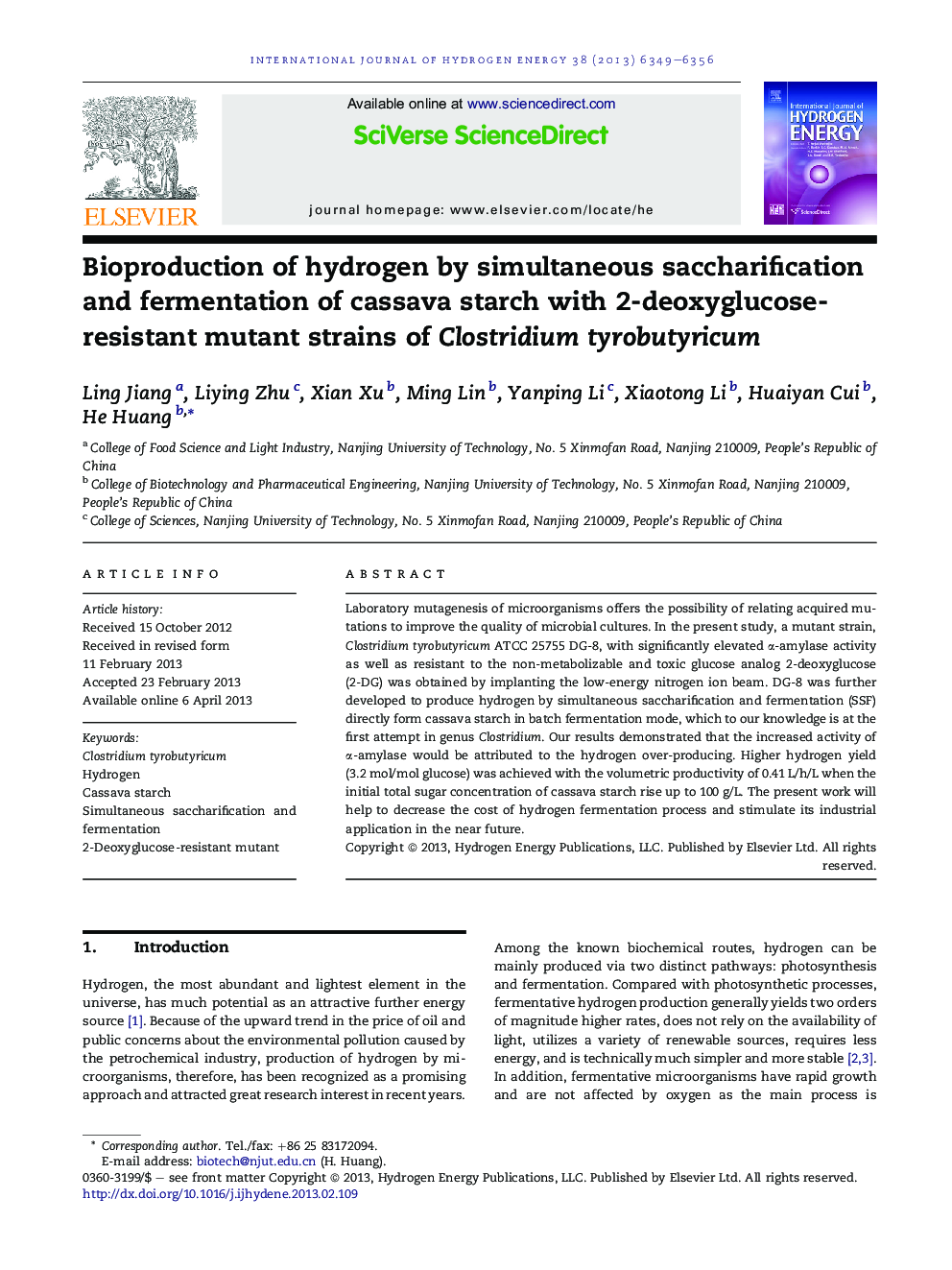| کد مقاله | کد نشریه | سال انتشار | مقاله انگلیسی | نسخه تمام متن |
|---|---|---|---|---|
| 1273748 | 1497530 | 2013 | 8 صفحه PDF | دانلود رایگان |

• A mutant with elevated α-amylase activity was obtained by ions implantation.
• The mutant Clostridium tyrobutyricum DG-8 was resistant to 2-deoxyglucose.
• The high activities of α-amylase was benefit for H2 over-producing.
• A batch SSF model directly from starch was conducted to produce H2.
Laboratory mutagenesis of microorganisms offers the possibility of relating acquired mutations to improve the quality of microbial cultures. In the present study, a mutant strain, Clostridium tyrobutyricum ATCC 25755 DG-8, with significantly elevated α-amylase activity as well as resistant to the non-metabolizable and toxic glucose analog 2-deoxyglucose (2-DG) was obtained by implanting the low-energy nitrogen ion beam. DG-8 was further developed to produce hydrogen by simultaneous saccharification and fermentation (SSF) directly form cassava starch in batch fermentation mode, which to our knowledge is at the first attempt in genus Clostridium. Our results demonstrated that the increased activity of α-amylase would be attributed to the hydrogen over-producing. Higher hydrogen yield (3.2 mol/mol glucose) was achieved with the volumetric productivity of 0.41 L/h/L when the initial total sugar concentration of cassava starch rise up to 100 g/L. The present work will help to decrease the cost of hydrogen fermentation process and stimulate its industrial application in the near future.
Journal: International Journal of Hydrogen Energy - Volume 38, Issue 15, 20 May 2013, Pages 6349–6356